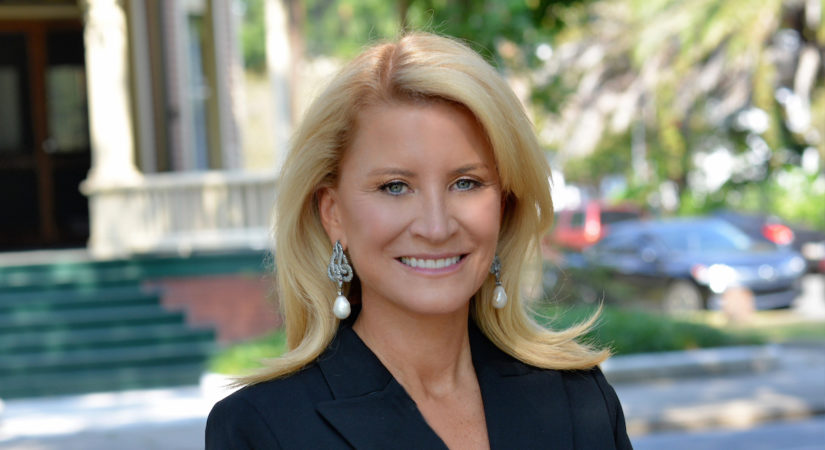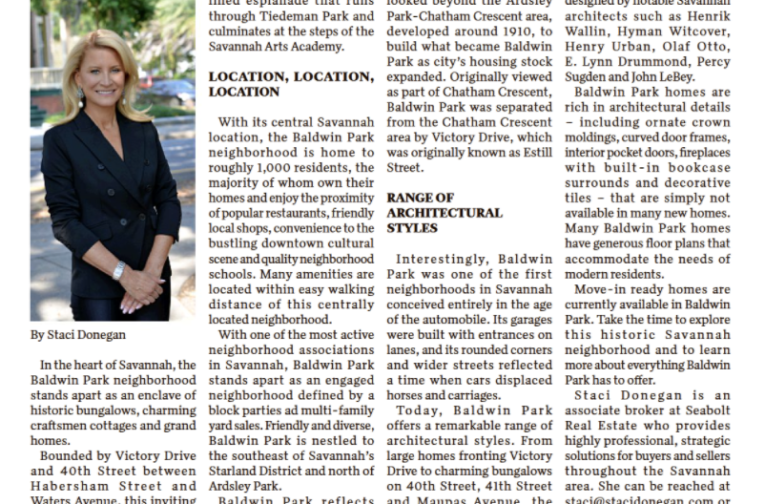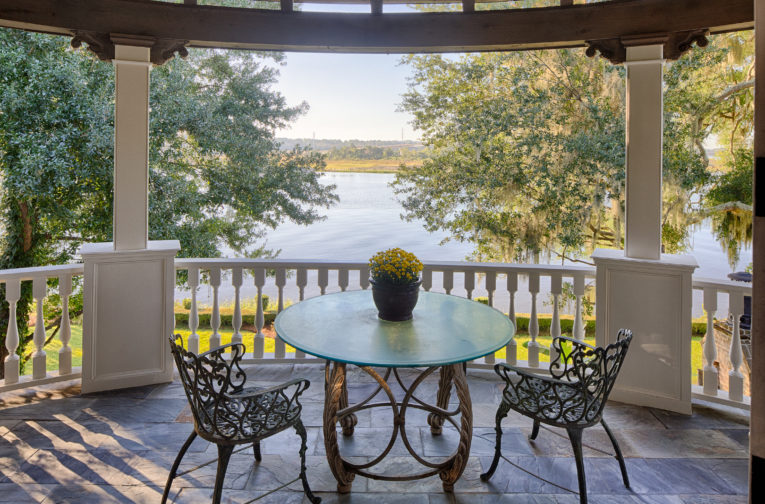If you drive along Anderson Street about five minutes east of downtown Savannah, you will find yourself in the historic Gordonston neighborhood, a leafy enclave that has the distinction of being one of the city’s oldest original, most intact suburbs.
An 80-acre neighborhood bordered by Gwinnett Street, Goebel Avenue, Skidaway Road and Pennsylvania Avenue, Gordonston was built in the early 1900s on land that originally served as the family farm of William Washington Gordon II and Eleanor “Nelly” Kinzie Gordon, parents of Girl Scouts founder Juliette Gordon Low. Known as some of the highest ground in Chatham County, Gordonston is also one of Savannah’s most recently designated Historic Districts and was added to the National Register of Historic Places on October 11, 2001.
Strategic Location
Gordonston’s strategic location along the old Thunderbolt streetcar line, which ran to and from downtown Savannah, made the Low farm an ideal location for a neighborhood on the city’s eastside. In 1917, advertisements touted the new community as “high and dry, very healthy, strictly suburban… [with] an 80-acre residential park.” The neighborhood’s park-like atmosphere remains, and the rest of Savannah is easily accessible from the Truman Parkway located less than a mile away.
Gordonston was developed by William Washington Gordon III, brother of Juliette Gordon Low. The five Gordon children inherited the family farm, and William bought out the shares of the other siblings to create a new subdivision centered around a classic design created by J.G. Langdon. Gordonston featured a dense, mature tree canopy, making the entire neighborhood park-like in appearance.
By 1917, Savannah had already seen the development of elegant new suburbs designed by formally trained architects. The Victorian District, Chatham Crescent, Ardsley Park and Gordonston all were inspired by the City Beautiful School of Urban Planning, which placed an emphasis on public space, native plantings and gracefully curving streets. Gordonston features a radial plan with streets emanating like spokes of a wheel from Pierpont Circle. This triangular-shaped neighborhood is bisected at the top by Kinzie Avenue, the street which once carried the all-important streetcar lines in the early 1900s.
Range of Architectural Styles
The earliest home in Gordonston were craftsman bungalows built on Kinzie and Gordonston Avenues from 1917 through the 1920s. The neighborhood got off to a relatively slow start, perhaps due to competition with other popular neighborhoods like Ardsley Park and Thomas Square. Only a few dozen lots had been sold in Gordonston by 1930, and a quarter of the lots remained undeveloped in 1945, when the post-WWII building boom finally saw the remainder of the neighborhood completed.
Later in Gordonston’s development, larger Colonial Revival-style homes were built. Construction continued in the 1940s and 1950s, adding early ranch-style houses. Other architectural styles of note in Gordonston include Tudor Revival, Arts and Crafts and Mission Revival. Noted Savannah architects like E. Lynn Drummond, Olaf Otto, Henrik Wallin, Abraham Anson Artley, Eugene K. Cashman and John LeBey all designed impressive homes in Gordonston.
Today, Gordonston features two scenic neighborhood parks: Pierpont Circle and Juliette Gordon Low Park. The wrought iron gates of Juliette Gordon Low Park – designed by Low herself after she took an iron-making course in England – mark the borders of a picturesque, family-friendly haven that’s ideal for neighborhood residents.
Gordonston has a number of move-in-ready homes offering historic charm as well as a tight-knit neighborhood atmosphere. Whether you’re looking for a charming Arts and Crafts cottage or a stately Tudor Revival estate, a wide range of options are available for today’s buyers in this popular eastside neighborhood.






